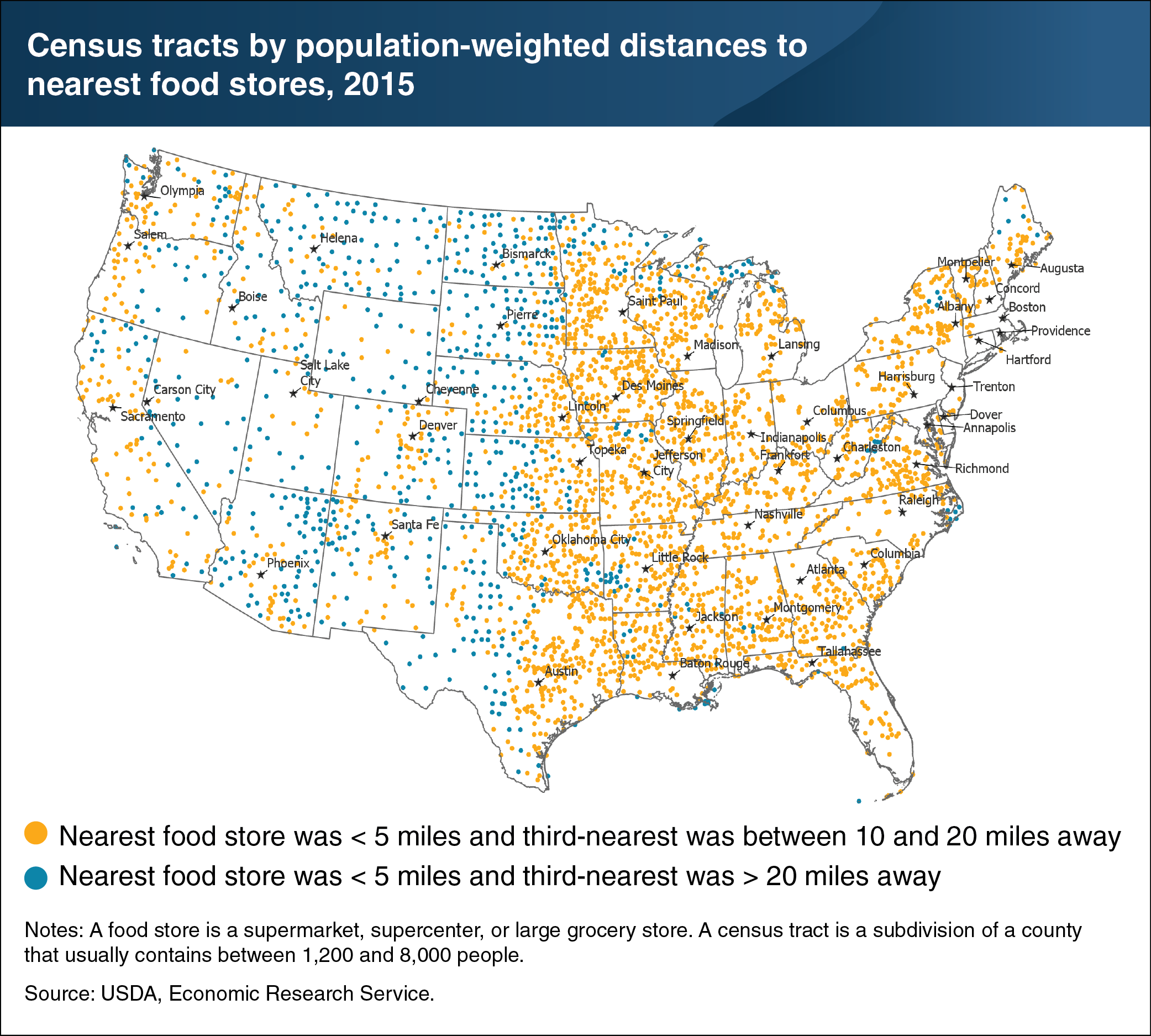Consumers in much of the United States had access to a third food store within 20 miles of their homes in 2015
- by Alana Rhone
- 7/10/2019

Distance from a person’s home to the nearest food store (supermarket, supercenter, or large grocery store) indicates the ease of access to a major source of a variety of healthful foods. However, a food store with no close-by competitors may not offer the best price, quality, or selection of products. ERS researchers used a variety of data sets to calculate distances between households’ residences and the nearest and third-nearest food stores for U.S. census tracts. Census tracts where the population-weighted center of the tract (i.e., based on where people live within the tract) was within 5 miles of the nearest food store and between 10 and 20 miles from the third-nearest food store were concentrated in the Midwest and portions of the eastern half of the United States. The majority of census tracts where the population-weighted center was within 5 miles of the nearest food store, but more than 20 miles from the third-nearest food store were in portions of the Great Plains section of the Midwest and the Southwest. This chart appears in “U.S. Shoppers’ Access to Multiple Stores Varies by Region” in the June 2019 edition of ERS’s Amber Waves magazine.


